

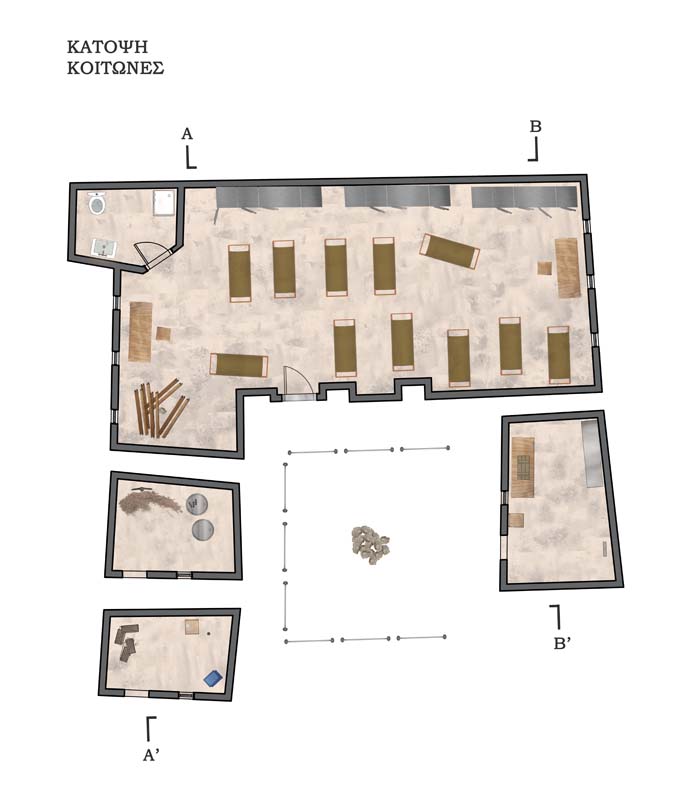



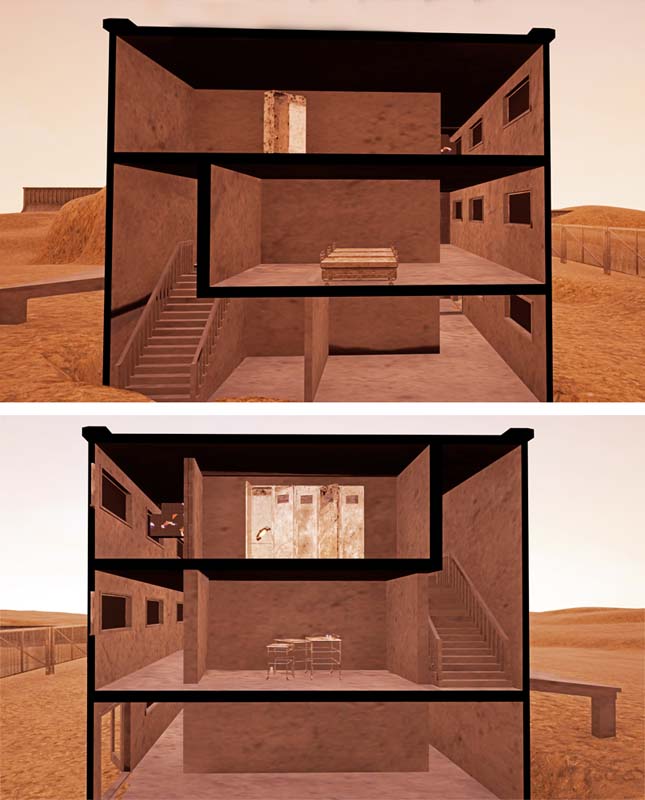

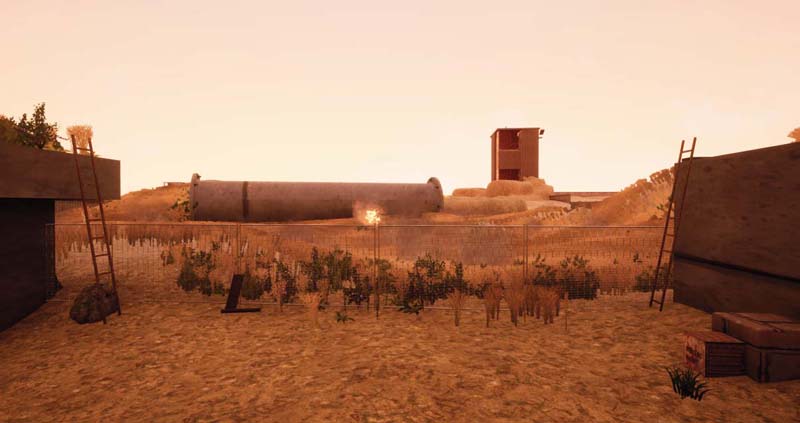



Taking into consideration the narration of the sci-fi book “Roadside Picnic” by the Russian authors Arkady and Boris Strugatsky, published in 1972, various elements of the Zone are studied and analyzed. The “Zone” is located in the notional town of Harmont, an exclusive zone with constant patrols. According to the story, the "Visitation" took place, an event that changed the areas in which it happened forever. The inhabitants of the areas soon became ill, unpredictable and unexplained phenomena also took place. Residents then fled the areas, which were excluded from the public for security reasons. The Visitation is about the arrival of extraterrestrial organisms on earth and is compared in the book to a picnic, due to the fact that various remains / objects were left behind, whose function was initially unknown. “Stalkers”, as they are called, are individuals that trespass the walls of the Zone with the intent to loot it and collect these grotesque objects, regardless of the great risks, so they can later sell them to the black market. The most valuable object of the Zone, however, is said to be the key to happiness for anyone who manages to find it. A hunter must overcome the instability and uncertainty of the Zone in order to survive and collect the most important of all, the so-called Golden Sphere. Based on the aforementioned plot of the book, the aim of this thesis is to create interactive environments where the individual will be able to experience the post-apocalyptic world of the Zone, its unexpected phenomena and follow missions as a Stalker in hope to find several of Zona’s Artefacts with the ultimate goal being the finding of the Golden Sphere.
Supervisor: Papadopoulos Spiros
Reference Number: 880
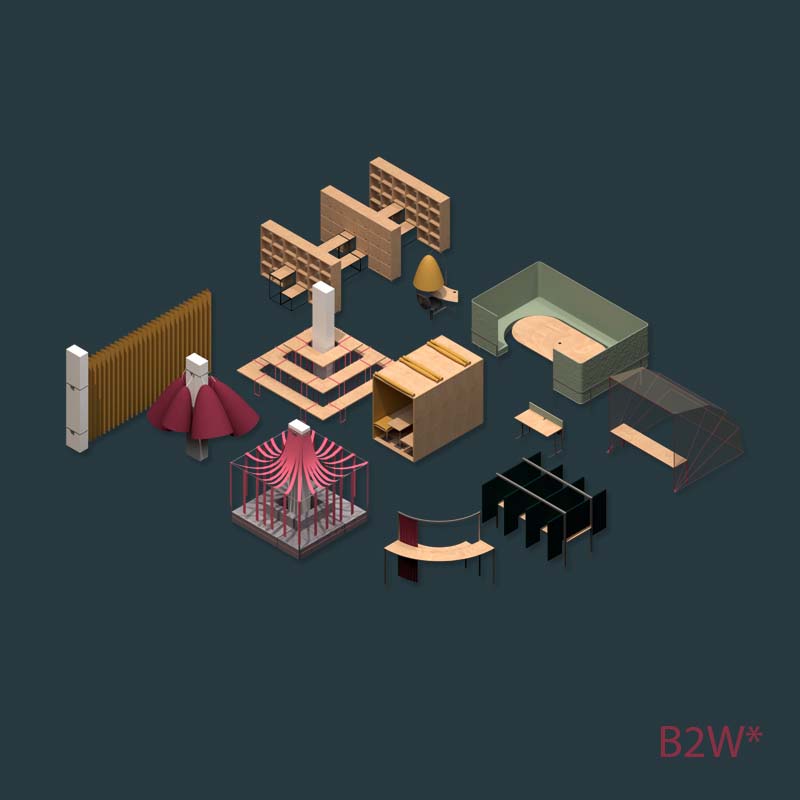

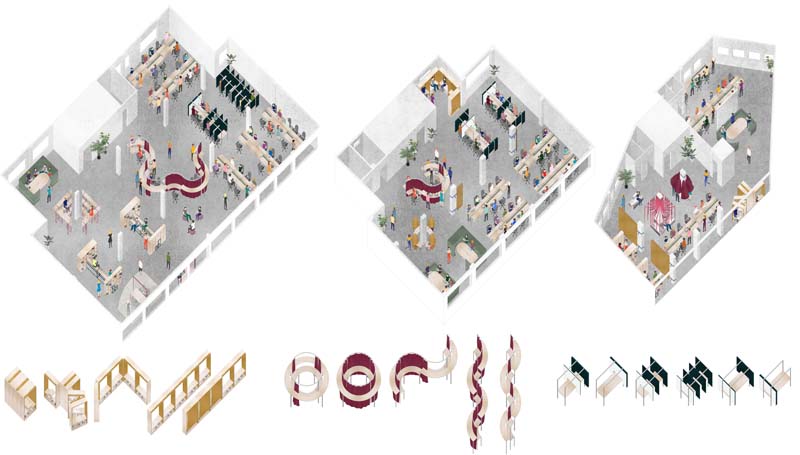

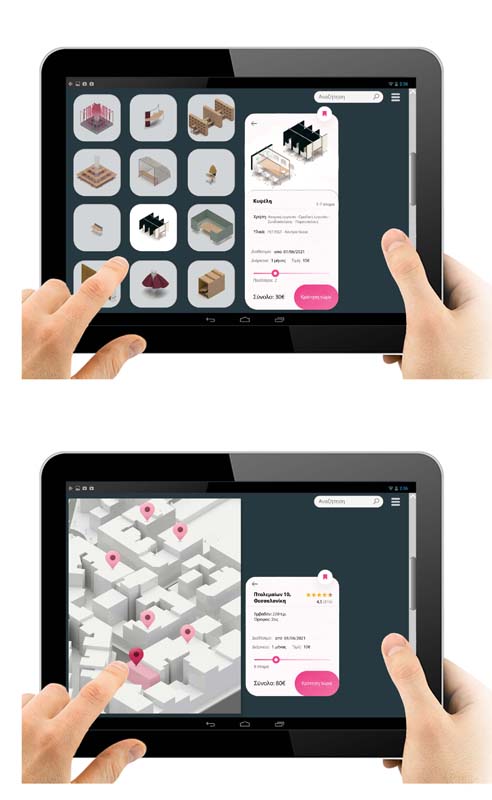

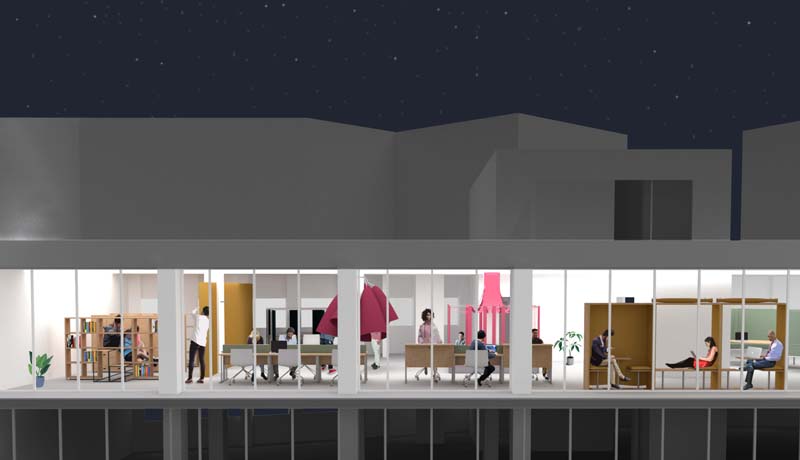

The office is a very interesting architectural typology which encompasses a seemingly large number of considerations including social, political, financial, ecological, and, of course, technological. The spatial systems that prevailed in office buildings throughout the last century were the open-plan office and the corridor office. However, both spatial arrangements had several drawbacks. The landscape office was then created in order to mitigate these disadvantages. Thus, a system based on the open plan layout was implemented but the difference was that light and low partitions ensured minimum privacy of the employees.
However, notions such as comfort and well-being had no place in the office until only recent years. Apparently in the workplace of the future, interaction, creative knowledge and collective designs seem to dominate. The static office is transformed into a sort of "community" and part of a city. The modern era is characterized by using new technologies and, consequently, the speed of adaptation to continuous developments includes workplaces. For this to take place, spatial arrangements must be able to move, adapt and operate based on the requirements of these new conditions.
Considering all the above, our proposal focuses on the design of flexible office structures that are placed in empty artisan buildings in the center of Thessaloniki. Artisan buildings with open spaces and a smaller number of building constraints, are often converted into office spaces. More specifically, through our study, we tried to point out the demands when converting this specific type of buildings into office environments. Such are for example the necessity for thermal comfort and sound insulation, the need for privacy or interaction. In addition, our design focused on the human factor and human experience, which are constant, despite the rapid developments and new data of our time.
Supervisor: Mitroulias Giorgos
Reference Number: 867
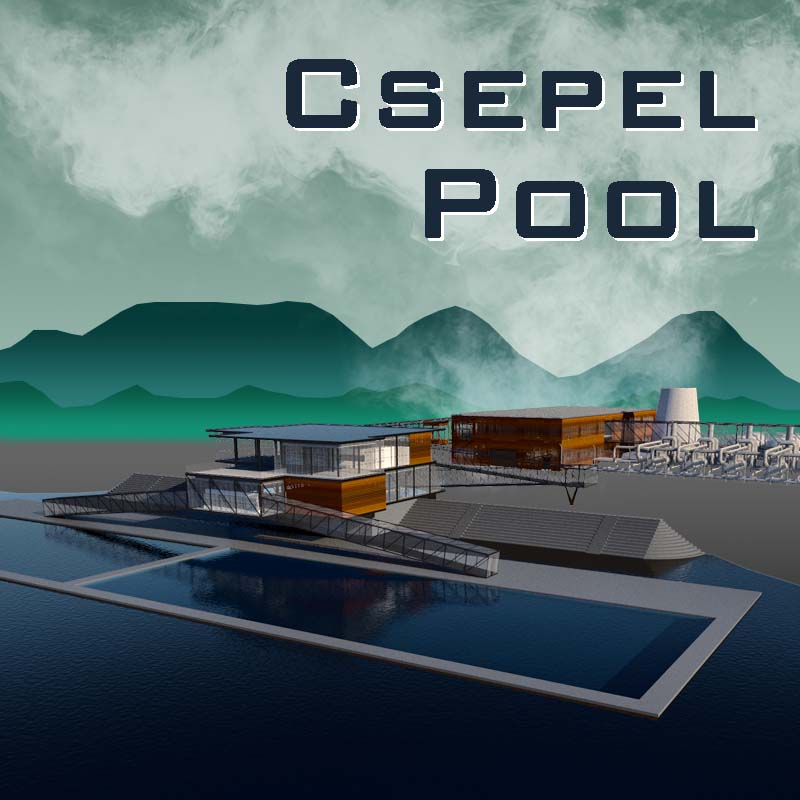

Present day reality is scourged by environmental destruction caused by humans themselves. False needs are nowadays leading to the overuse of natural resources in such a pace that the environment is unable to restores them. Energy crisis is now a major matter. The immoderate use of fossil fuels reinforces the air pollution, while contributing to the greenhouse effect. Turning to renewable energy sources seems to be financially unviable albeit vital. Such a change may irreparably affect state’s economy. Or is this maybe an outmoded point of view?
It is not unusual for every country to have an untapped geographical and climatic wealth. An adequate exploitation of such wealth can give an end to the environmental crisis. With recent technological achievements on their side, each country’s resources are now more than economically viable. Without people letting go of their comforts, yet by altering the way these comfort become accessible to them, the energy issue can be improved.
In the thesis, such a solution is suggested. By utilizing the geothermal energy of the city of Budapest and connecting it with thermal baths, an upgrade in people’s life quality can both directly and indirectly be achieved. To put this in other words, assuring prosperity, as well as environmental protection, is the here objective. This project focuses on the city’s needs, with respect towards its historical inheritance, but also with a reflective mood.
Supervisor: Mitroulias Giorgos
Reference Number: 900


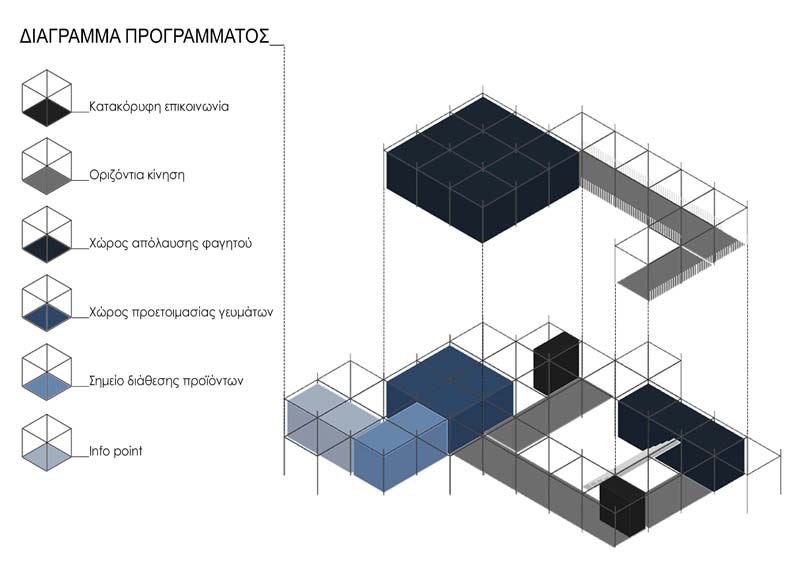

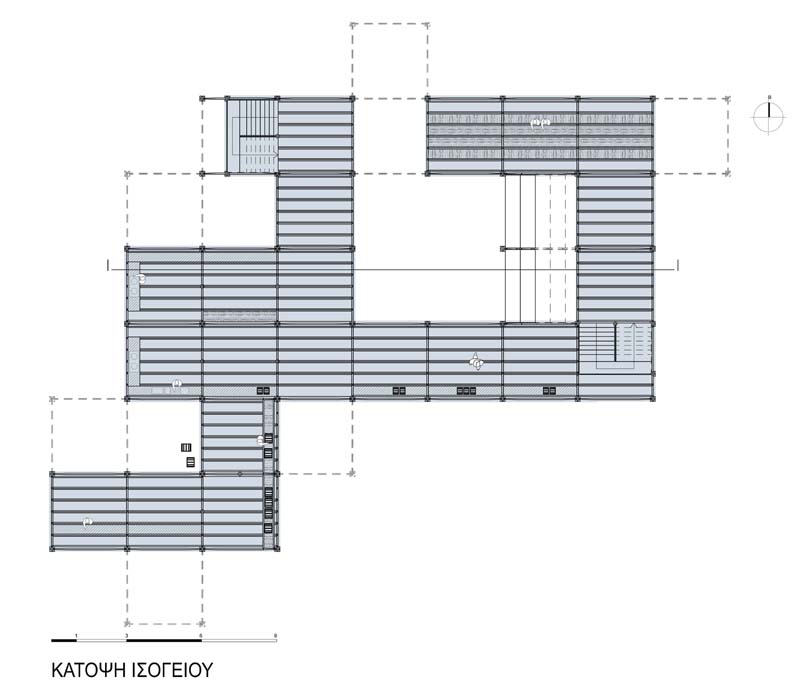

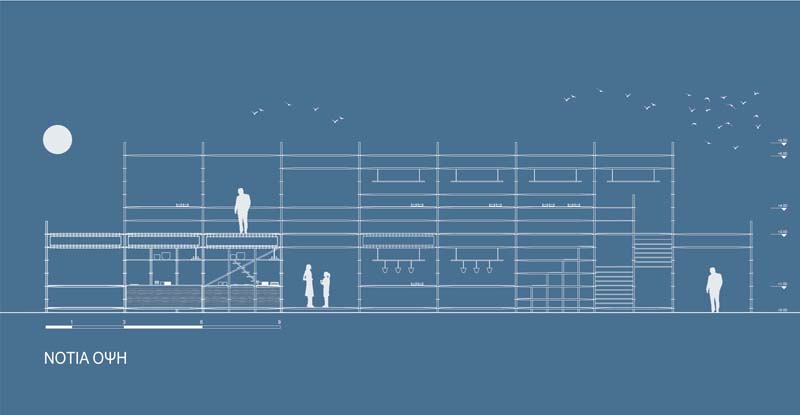

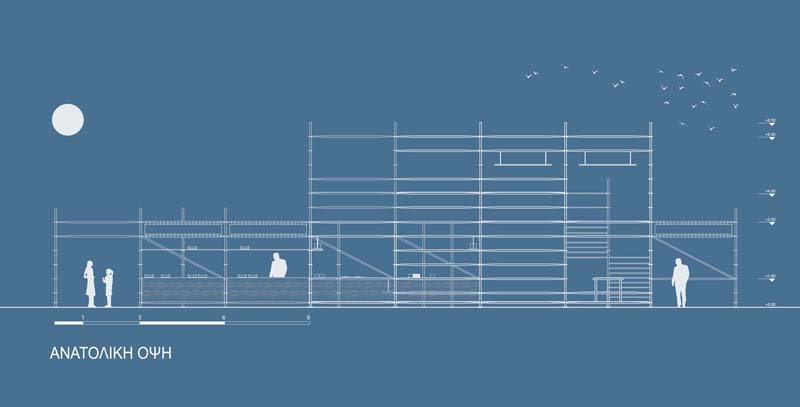

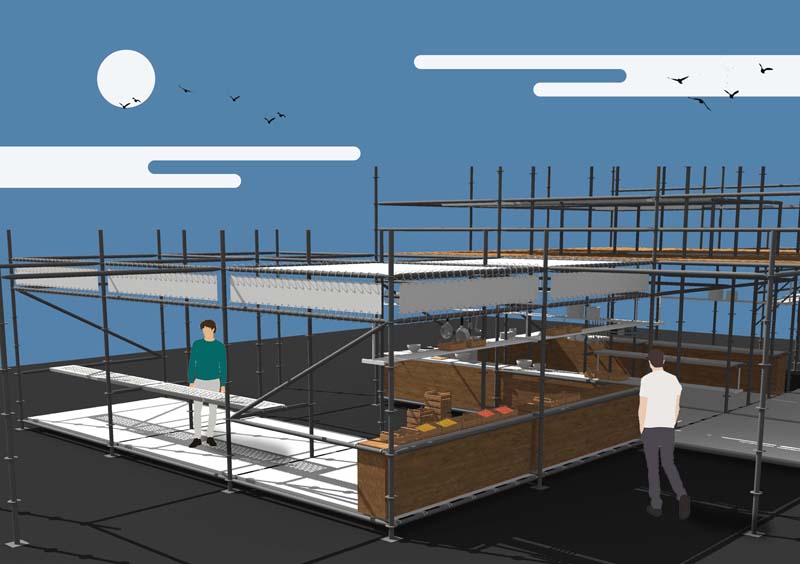

The concept of food in the living space is associated with most of human activities, taking into consideration tha fact that in order to live we need energy, which we receive from food. A relationship between food and architecture is detected, but the importance is often overlooked during the designing process. However, the issue of "food waste" is a global issue, as a large percentage of the population is facing food insecurity problems. The question that arises is, how can the architecture respond immediately and design the appropriate infrastructure? When the needs and data of today's society change, and a new normality has been created with the COVID-19 pandemic, the design of the space has to be adaptive. This implies changes in the consuming habits of the people, through informing and raising awareness on the subject.
It is a public intervention, a structure, which will be characterized by an exchange mechanism, through the initiative for food distribution and then food production, including meals preparation. It negotiates the social and economic needs of the inhabitants, through the mechanism of the alternative economy. It redefines the traditional form of the restaurant, giving a new interpretation to the terms producer and consumer. Visitors to the structure become part of a production chain so that it can function. The consumers selects and buys the raw materials, then the meal is cooked in front of them and provided there, in order to strengthen people's relationships.
The structure operates autonomously, co-exists in the market, and on a daily basis collects food excess from markets, restaurants etc. The food distribution community organizes various activities, which are available at the info point of the structure, from where people can be informed about any action. So, a flexible and rapid architecture emerges.
In order for this structure to function in Greece, it "travels" within Thessaly. It is installed in each place for a month, in order to inform the inhabitants, to highlight the local products and to encourage the relations of the community. The uniqueness of the design allows easy and fast assembly, through the flexible scaffolding structure.
Supervisor: Gavrilou Evelyn
Reference Number: 871
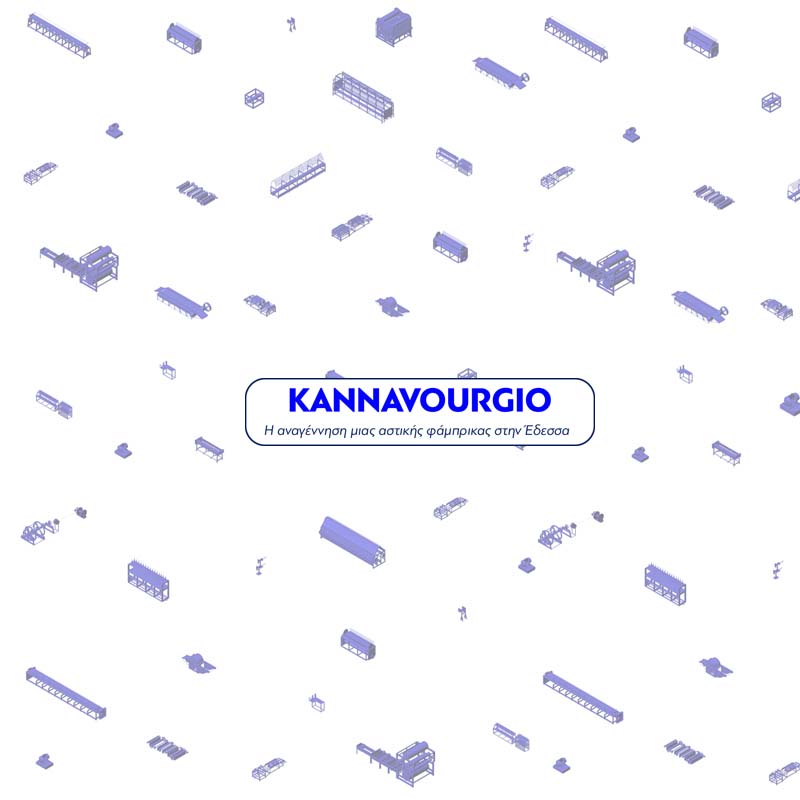

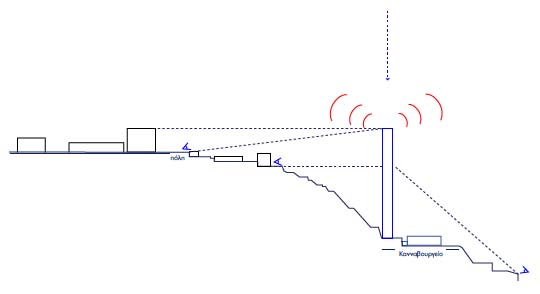

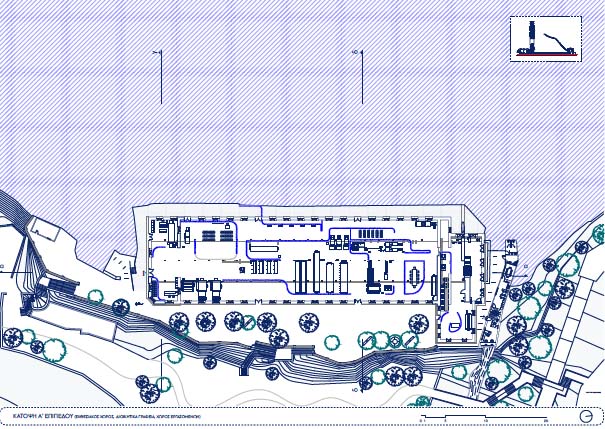

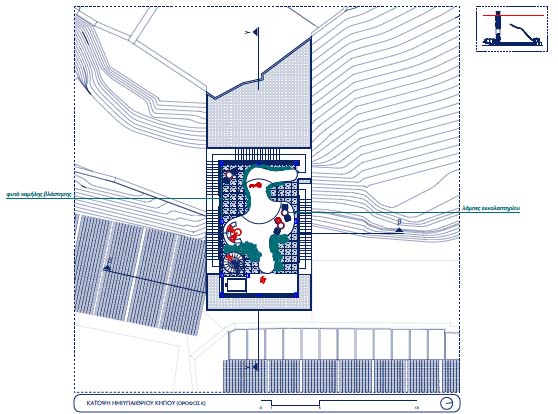

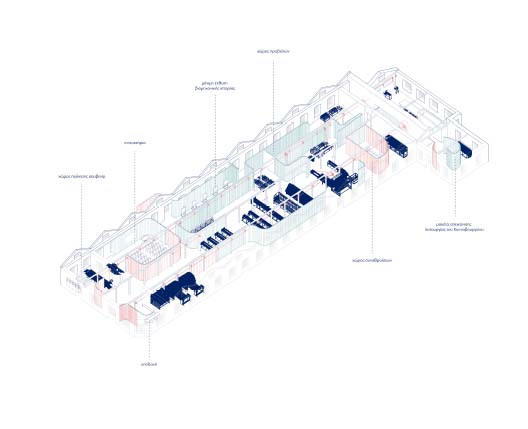

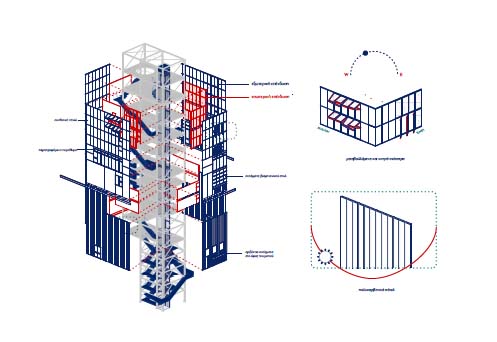

The vast amounts of waterfall made the city of Edessa, at the beginning of the 20th century, one of the largest industrial areas of the country. Today, the sparse remaining but also abandoned hydropower plants on the edge of the city, define mainly its character. However, they diverse idyllically from its natural qualities, due to the fact that their main purpose is to stand as idle shells without any integration to the urban lifestyle which is developed more and more. The presented thesis is influenced by the aforementioned points and mainly focuses on the matter of the management of these industrial reserves, while it states the various strategies around their re-usage, re-integration and re-operation. The main interest is around the industrial residues, the Kannavourgio, a former production unit of strings and ropes made out of cannabis, which still until today its mechanical equipment is remained on site. While discovering its important features, various objectives are placed for its “revival”, which will be the main aim of this thesis. Due to that, while analyzing the main features of the grounds and each part of the complex, new data are being collected for its main material (cannabis) and the current issues of the city are being investigated. In the meantime, while searching for any potential plans to re-use the current shells, a strategy to re-integrate in the urban area of the city is considered. Therefore, what emerges from the above is an idea of a multistory building (tower), which is located on the same level as the former production unit, bridging the height difference with the urban level. The purpose of this proposal is not about a development of another landmark in Edessa (waterfalls), but a landmark for the Kannavourgio itself, namely an attraction point. Together with the tower Kannavourgio, the current shells are being revived while considering new plans in order to renew them. The new shapes and ideas create a multi-structure full of activities, a new era for Kannavourgio which its main purpose is with no doubt the interpretation of its unique importance.
Supervisor: Gavrilou Evelyn
Reference Number: 856
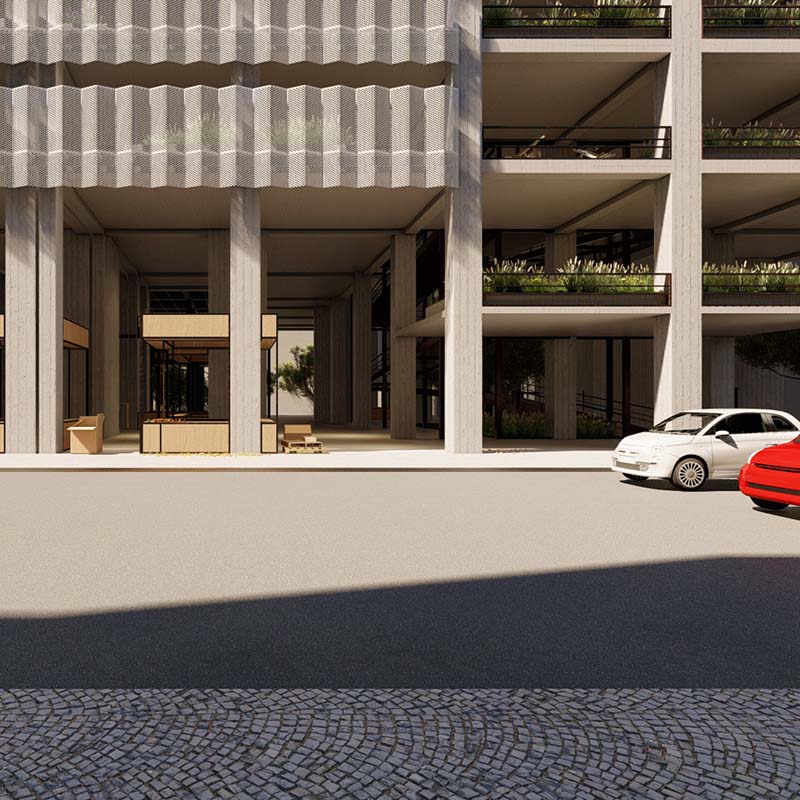

Living most of our lives in Athens, we see the character of the city change over time and especially its center. Words and terms such as gentrification, immigration, marginalization, common ground, climate change, adequacy of natural resources and sustainability in modern cities have occupied us throughout our dissertation. Thus, our project is based on a proposal for intervention in an existing urban stock in the center of Athens and attempts to function as a starting point for the creation of additional similar structures that will be a network of social solidarity and improving the quality of life in the city with ecological character. . This dissertation concerns the revival of the abandoned MINION shopping center. By proposing a common space that functions as a modern urban refuge, we want to create a space of free expression, creative employment, education and vocational training for all age and social groups. Critically positioned in terms of urbanization and urban identity, we aim to strengthen social and ecological consciousness. Emphasis is placed on creative solutions for adapting to climate change and implementing a circular economy.
Supervisor: Gavrilou Evelyn
Reference Number: 897
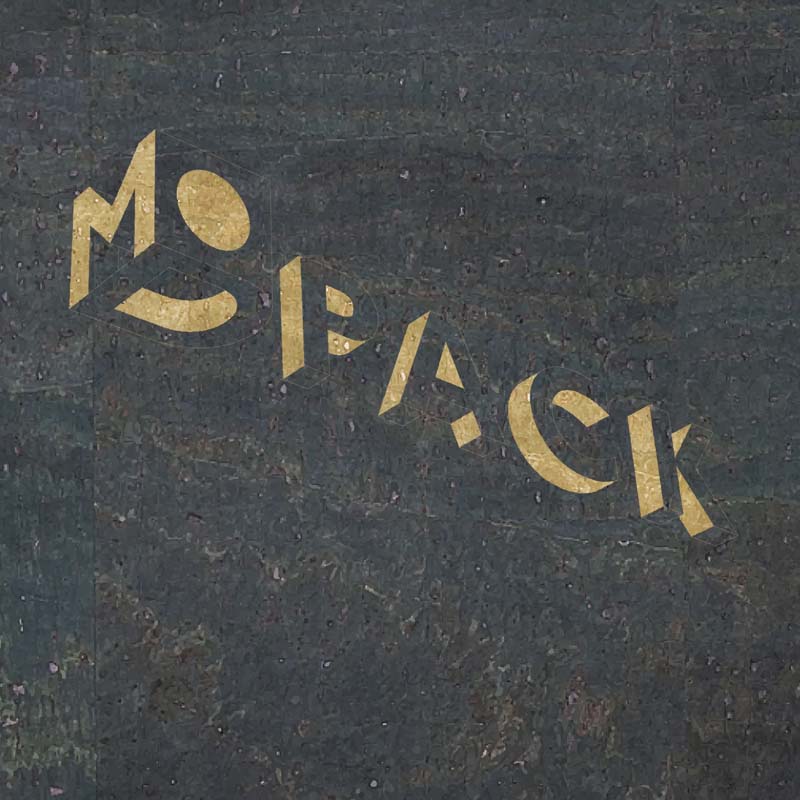

This thesis was preceded by extensive research and admiration for mental and physical wandering. An object was consequently designed and created based on the latter two aspects. MODPACK (modular pack) is a biodegradable backpack for urban and rural usage that encourages the user to accompany it on their journey through life. It consists of the PACK (the main body) and the five separate MODs (detachable modules) that are linked to it and provide the conditions for each use. The backpack may be fastened around the waist with the belt mod, used as a resting-floor with the seat mod, and each component can have additional uses with the clipping strap mod. MODPACK is waterproof due to the use of cork and natural hemp-fiber derivatives as the primary materials. Particular attention was paid to the use of materials and design principles. The designer's / creator's intended vision is to create in the present, while planning for the future, focusing on the usage, durability, innovation, repair ability, mortality, aesthetics, ecology and product sincerity. These were the axes the design of MODPACK followed, since each product must gaze into the future with moral responsibility towards society and the Planet.
Supervisor: Psychoulis Alexandros
Reference Number: 898
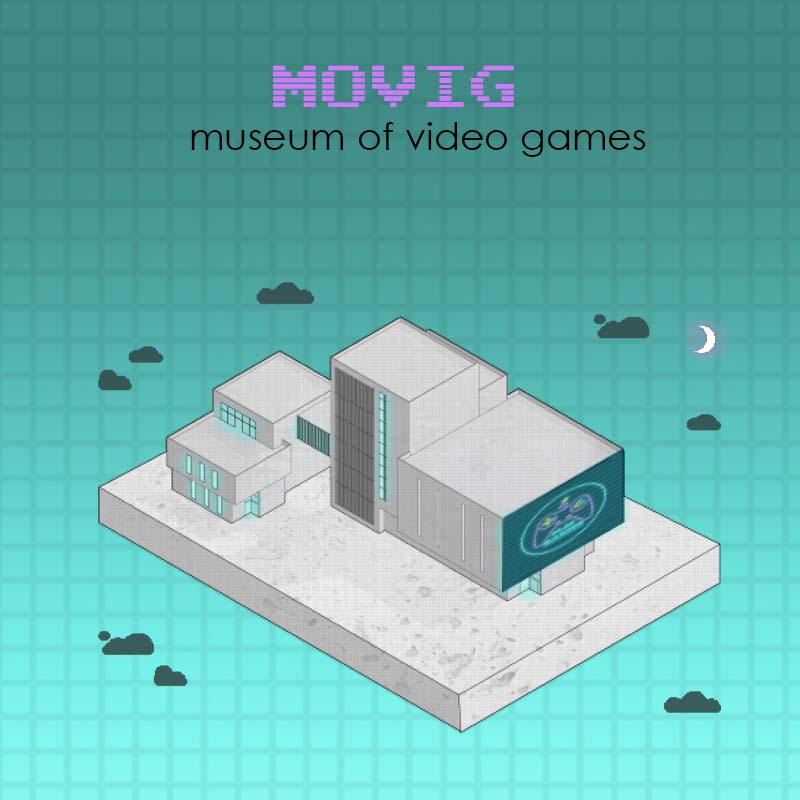

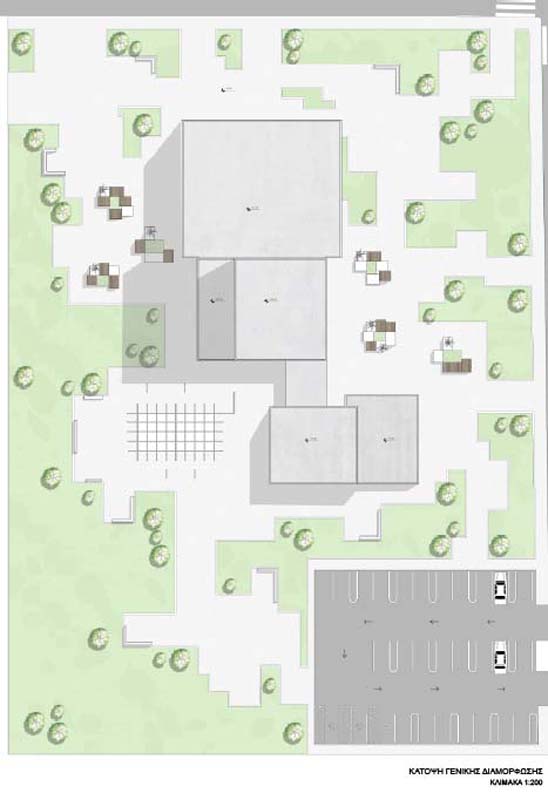



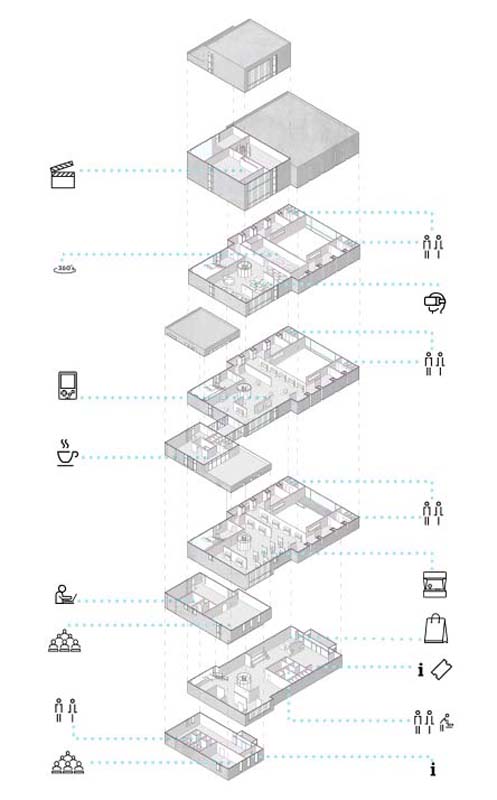

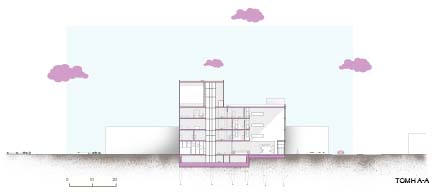

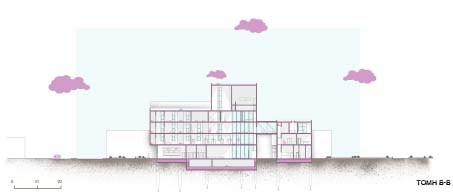

Thessaloniki is the most important administrative, cultural and business center in Northern Greece and is the second largest city in the country. Capital of culture in 1997, Thessaloniki was and is a city with intense cultural activity, as evidenced by museums, theaters, the Concert Hall, festivals and its musical heritage, Thessaloniki is constantly producing culture. Although the museum experience of the city is rich and mainly concerns its history, it is important to refer to the technological means that constitute the present and the future of the city.
The spread of video games in the lives of people of all ages has been going on for several decades. They are now part of culture and human experience. Video games can be used as a means of entertainment but also as a means of expressing ideas. Therefore, it is important for Thessaloniki as a cultural city to highlight the history and the artistic value of a medium, which many people overlook.
For the creation of the video games museum, a location was chosen on the west side of the city, as it is one of the developing areas of Thessaloniki. In order to preserve the character of the area, a basic design principle is the creation of a museum with industrial characteristics, as around the plot there are several industrial preserves such as Fix and Sfagia.
Finally, the existence of the video games museum will be a significant addition to the cultural identity of the city as it will take part in an international dialogue on the value of this medium and will be a landmark for the region.
Supervisor: Symeonidou Ioanna
Reference Number: 873

